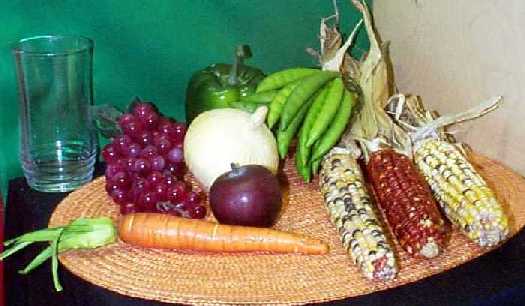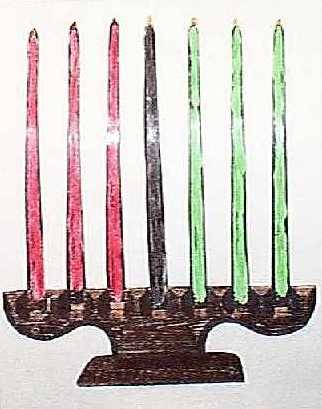Kwanzaa
Kwanzaa, which means "first"
or "first fruits of the harvest" was founded by Dr. Maulana Ron Karenga
in 1966. It is a seven day holiday to remind African Americans of
their ancestors and their struggle for freedom. It also is about communities
and families coming together. It begins on every 26th day of December and
ends on New Years Day. African Americans who participate in this
holiday should remember their ancestors and try to follow the Nguzo Saba
the 7 principles of Kwanzaa.
The number seven is also an important
number. Their are seven letters in the word KWANZAA. There
are seven principles to be reminded of and seven things that are represented
in Kwanzaa. Those symbols are: the mkeka, kinara, mishuma saba, muhindi,
kikombe cha umoja, zawadi and the karamu. The color red,
represents the blood of the people that was shed during their struggle
for freedom. The color black, represents the color of their skin,
and green represents
the land and the harvest after their struggle.
On New Years Eve, zawadi (gifts) are given to
the children for keeping promises they made to their parents during the
year, but one gift per day may be given also. The karamu (feast)
is held and many families come together to eat and celebrate the holiday.
Singing and dancing also take place during the feast.
The Mkeka and the Mazao Lay on the Altar
The mazao (vegetables) symbolize the harvest of the
year. It reminds the people to be grateful after their struggle.
The muhindi (corn) symbolizes the children that may be present in the home.
It also represents the children of Africa. A single ear of corn is placed
for each child in the home. If no children are present in the home
then one ear of corn is usually placed on the mkeka (mat). Three
ears of corn were chosen because three interns worked on this project.
The mkeka represents the foundation for self actualization. The Kikombe
cha umoja (unity cup) is used to pour libations to African ancestors.
Kinara and the Mishuma Saba
The Kinara (candleholder) represents the principles,
and the Mishuma Saba (candles) represent the individual principles which
are called the Nguzo Saba.
Nguzo Saba
Umoja - unity
Kujichagulia - self determination
Ujima - collective work and responsibility
Ujamaa - cooperative economics
Nia - purpose
Kuumba - creativity
Imani - Faith


